These are the loudest animals on Earth
These are the loudest animals on Earth
Did you know some whales can make sounds louder than jet engines? Or that a tiny shrimp can make a noise loud enough to kill small fish? How about the insects that are louder than howler monkeys?
Sound travels differently underwater than it does on land—muffling sound levels that might otherwise be lethal to the human ear—which is important to remember when learning how whales and dolphins make some of the loudest sounds in the animal kingdom. While 180 to 200 decibels (dB) on land is loud enough to be deadly, it wouldn’t be lethal in the ocean.
From the croaking coqui to the bellowing sperm whale, here is a list of 16 of the loudest animals on Earth.
1. Sperm whale
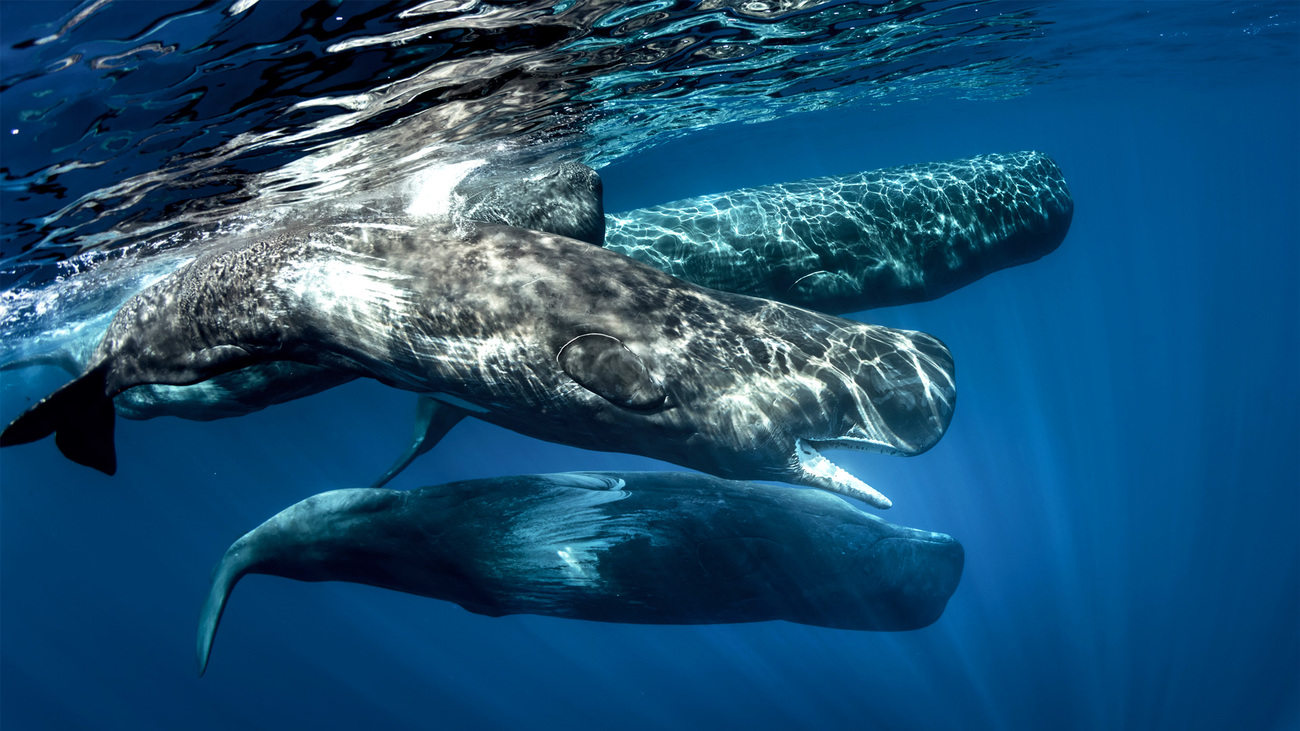
Sperm whales (Physeter macrocephalus) are regarded as the loudest animals on the planet, capable of making sounds up to 230 decibels. This is louder than the sounds of jet engines, which are about 150 decibels.
Like other whales, sperm whales communicate with one another through sound. It’s estimated that their calls can travel thousands of miles through the ocean. Sperm whales also use their clicking sounds for echolocation, to locate their prey—which include giant squid—in deep, dark waters.
Want to help protect marine mammals like sperm whales from vessel strikes and ocean noise pollution?
2. Pistol shrimp
Pistol shrimp, also known as snapping shrimp, are crustaceans in the family Alpheidae capable of producing sounds up to 189 decibels with the snap of their large claws. They are known for their asymmetry—one claw is always much larger than the other, and this is the one that can produce a sound powerful enough to stun their prey.
Pistol shrimp wait in burrows for fish to swim by, and they detect them using their antennae. After sensing the presence of fish, they make their ‘shot’, which gives them their name.
One snapping shrimp species is known as the Pink Floyd pistol shrimp (Synalpheus pinkfloydi) after the rock band—this is because their large claws are bright pink. It’s fitting considering the sound they emit can reach levels louder than a rock concert.
3. Blue whale
In addition to being the largest animals in the world, blue whales (Balaenoptera musculus) are among the loudest—their vocalisations can reach 188 decibels. They use their loud voices to communicate with other blue whales across hundreds of miles. Their sounds have been described as pulses, grunts, groans, and moans.
4. North Pacific right whale
The North Pacific right whale (Eubalaena japonica) and its cousin in the North Atlantic are some of the loudest animals on Earth. Capable of producing sounds up to 182 decibels, North Pacific right whales typically only make loud, individual sounds, but in 2019, researchers discovered that they can also ‘sing’. Alongside the critically endangered North Atlantic right whale, North Pacific right whales are some of the rarest whales on Earth.
5. Atlantic spotted dolphin
The whistles of Atlantic spotted dolphins (Stenella frontalis) can measure up to 163 decibels from just one metre away. These acrobatic dolphins are also known to leap out of the water and ‘surf’ in the waves created by boats.
Atlantic spotted dolphins—like many other marine mammals—are threatened by ocean noise pollution, as it disrupts their ability to communicate. Learn more about how IFAW is working to reduce ocean noise.
6. Bottlenose dolphin

Similar to spotted dolphins, bottlenose dolphins (Tursiops truncatus) can produce whistles up to 163 decibels, measured from one metre away. These dolphins are highly intelligent, and they use various sounds for communication and high-frequency echolocation to locate prey—which includes fish, squid, and crustaceans. Communication is key, as they often hunt in groups, working together to herd fish or corner them against the edge of a sandbar.
7. North Atlantic right whale
One of the most endangered marine mammals in the world, the North Atlantic right whale is also one of the loudest—it can produce sounds measuring up to 150 decibels. On land, this sound level would be comparable to that of fireworks or gunshots. However, as they make these sounds in the ocean, they aren’t heard by the human ear in the same way. If you were swimming next to a bellowing North Atlantic right whale, it wouldn’t hurt your ears like standing next to a bursting firework would.
In addition to vessel strikes and fishing gear entanglement, right whales are severely impacted by ocean noise pollution, and with only about 350 of these whales remaining, solving this issue is critical for the species’ survival. Researchers recently found that North Atlantic right whales are shouting in response to increased noise in their habitats.
IFAW is dedicated to protecting North Atlantic right whales from ocean noise and other threats.
8. Greater bulldog bat
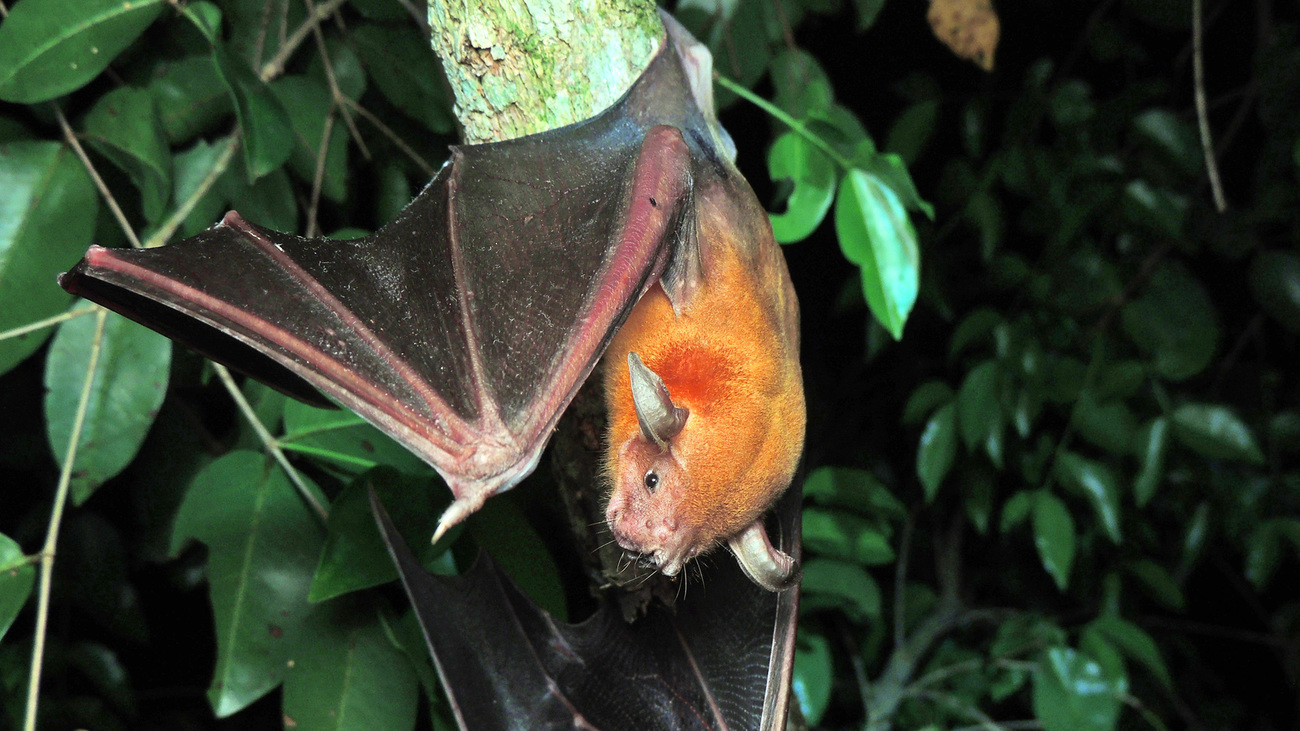
Native to Mexico, Central America, the Caribbean, and northern South America, the greater bulldog bat (Noctilio leporinus) is a fish-eating bat species capable of producing sounds over 140 decibels. Also known as the fisherman bat, the greater bulldog bat makes echolocation sounds that are an abnormally high frequency for such a large bat species—it’s about 11 to 12 centimetres (4.3 to 4.7 inches) long with a 70-centimetre (27.5-inch) wingspan. Greater bulldog bats are considered the loudest bats in the world.
9. Rooster
Used for centuries as natural alarm clocks, the crow of a rooster (Gallus gallus domesticus) averages around 130 decibels, and a rooster in one study reached 136 decibels. These domesticated birds produce such loud sounds to announce the new day, lead their flocks of hens to forage, designate territorial boundaries, and warn others of predators.
Around the world, there are many different words used to describe the sound of a rooster. In English, it is ‘cock-a-doodle-doo.’ In Afrikaans, it is koekeloekoe. Arabic has a few different terms—including kuku-kookoo, kuku-reekoo, and esku-kookoo. Dutch speakers say kukeleku, French speakers say cocorico, and German speakers say kikeriki.
10. Northern elephant seal
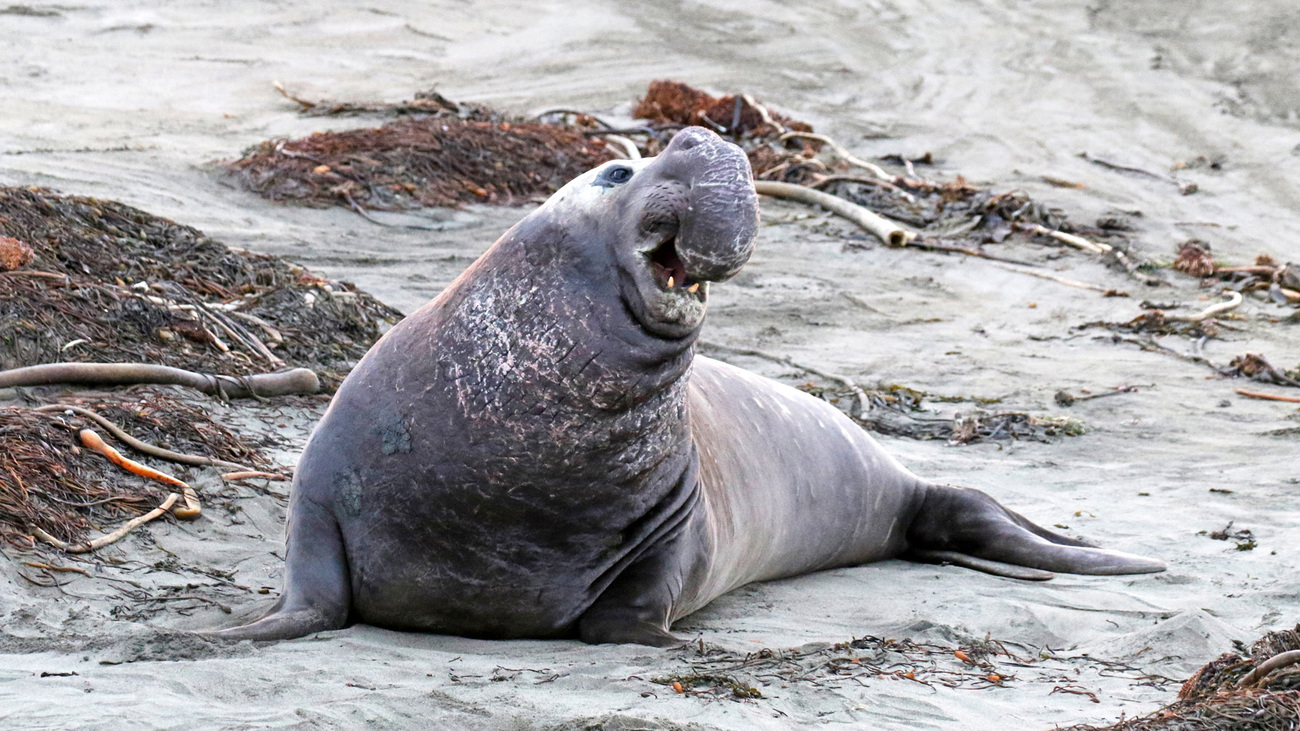
Northern elephant seals (Mirounga angustirostris) produce their loud calls during breeding season—calls that reach up to 131 decibels. Male northern elephant seals use these calls to differentiate themselves as individuals in a busy, noisy breeding crowd. They can be found breeding on the Channel Islands of California from December to March, before travelling as far north as Alaska’s Aleutian Islands in the warmer months.
11. White bellbird
The white bellbird (Procnias albus) takes the prize for producing the loudest wild bird call ever scientifically documented, which was 125 decibels. Their call has been described as bell-like, though it is loud enough to be painful to the human ear if heard close enough. White bellbirds can be found in the tropical and subtropical forests of northern South America, including Venezuela, Brazil, Guyana, Suriname, French Guiana, and Trinidad and Tobago.
12. Screaming piha
Screaming pihas (Lipaugus vociferans) come in second place for the loudest wild bird. Recorded in the same study as the white bellbird, they reached peaks of 116 decibels—it’s no mystery how they got their name. These small grey birds are found in northern South America, including in the Amazon rainforest.
A few other birds make the list of the loudest animals on Earth, but there isn’t enough scientific data on their calls to determine exactly how many decibels they can reach. With that said, a few honourable mentions are nanday parakeets, salmon-crested cockatoos, and mealy Amazon parrots.
13. Lion
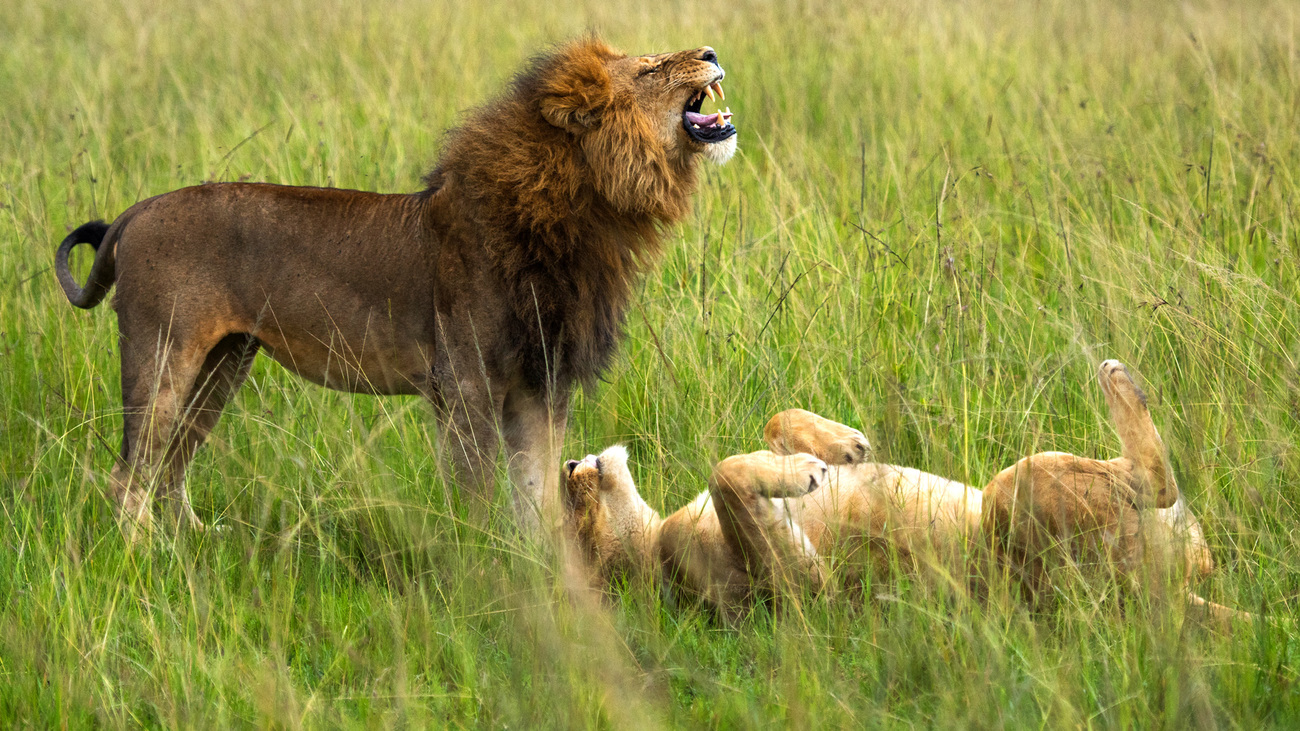
The lion (Panthera leo) tops the charts for the loudest big cats at 114 decibels, measured at a distance of about one metre—comparable to the sound of a chainsaw. Their roar can be heard up to 8 kilometres (5 miles) away. Lions’ vocal folds have a square shape that allows them to produce a loud, powerful noise without putting much pressure on their lungs.
14. African cicada
One cicada species (Brevisana brevis) is likely to be the loudest insect on record, capable of producing sounds up to almost 107 decibels, measured from a distance of 50 centimetres (20 inches). Also known as the shrill thorntree cicada, this large insect is found across Africa.
15. Howler monkey

Howler monkeys (genus Alouatta) are likely to be the loudest primates in the world. Their call, which is said to sound like a garbage disposal, can reach up to 90 decibels and can be heard up to 4.8 kilometres (3 miles) away through dense forest.
There are fifteen recognised howler monkey species, distributed across Central and South America, with some reaching as far north as Mexico. Nine of these species are listed as near threatened, vulnerable, or endangered on the IUCN Red List.
16. Coquí
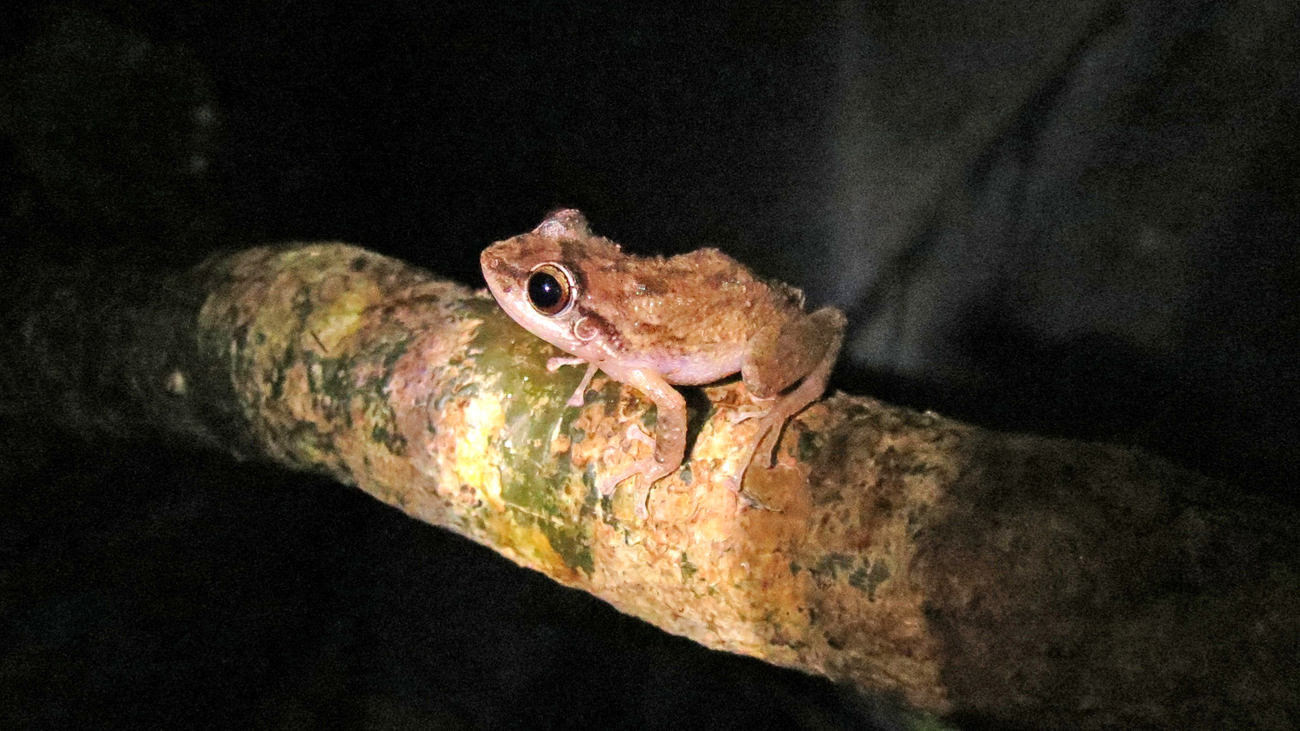
Coquí are a few species of frogs in the genus Eleutherodactylus native to Puerto Rico, of which they are an unofficial national symbol. Two species, the common coquí (Eleutherodactylus coqui) and upland coquí (Eleutherodactylus portoricensis), are known to produce very loud mating calls at night. Only the male frogs make this noise, which has been measured at 80 to 90 decibels. Another study measured the call at 80 decibels from 0.5 metres away. These frogs are so noisy that, as invasive species in Hawaii, their ‘loud, incessant, and annoying call’ has been listed as an issue by the Hawaii Invasive Species Council.
Coquí are assumed to be the loudest frogs in the world. Their name, which is an onomatopoeia, derives from the sound they make.
Want to help protect animals around the world?
Related content
Every problem has a solution, every solution needs support.
The problems we face are urgent, complicated, and resistant to change. Real solutions demand creativity, hard work, and involvement from people like you.